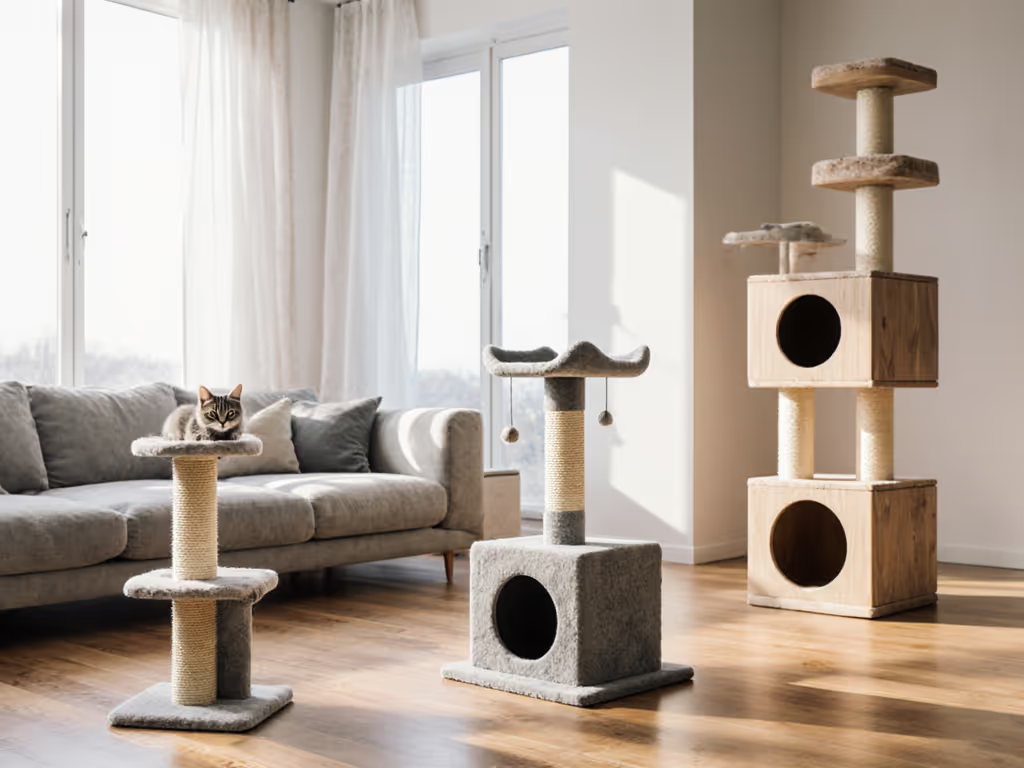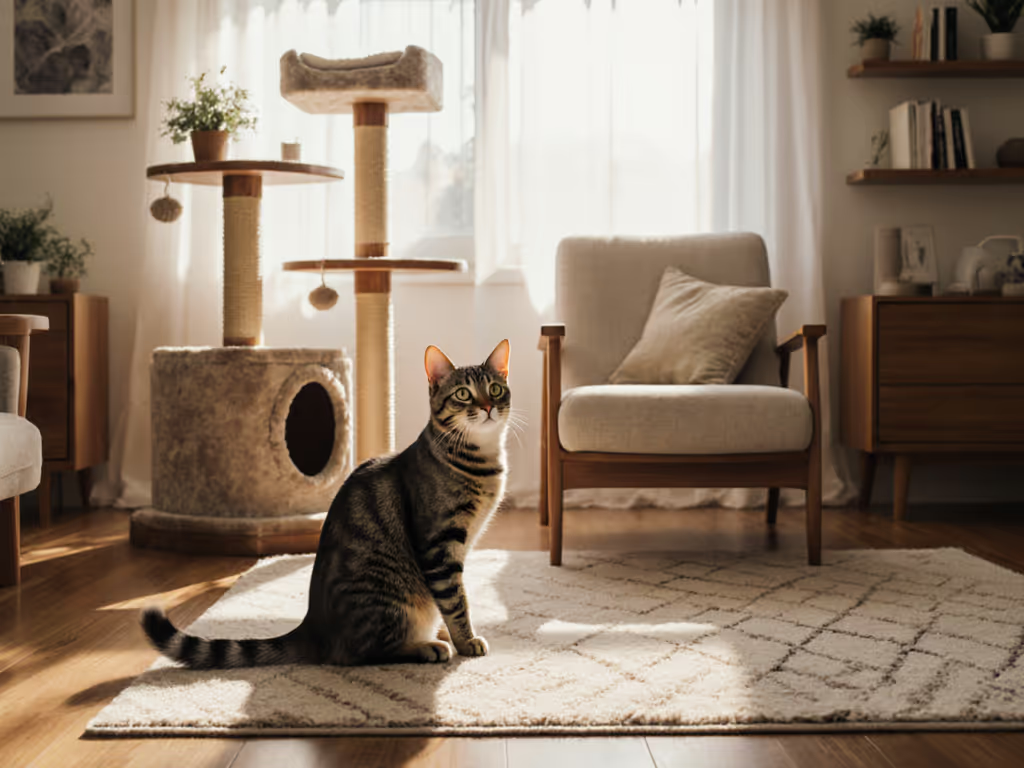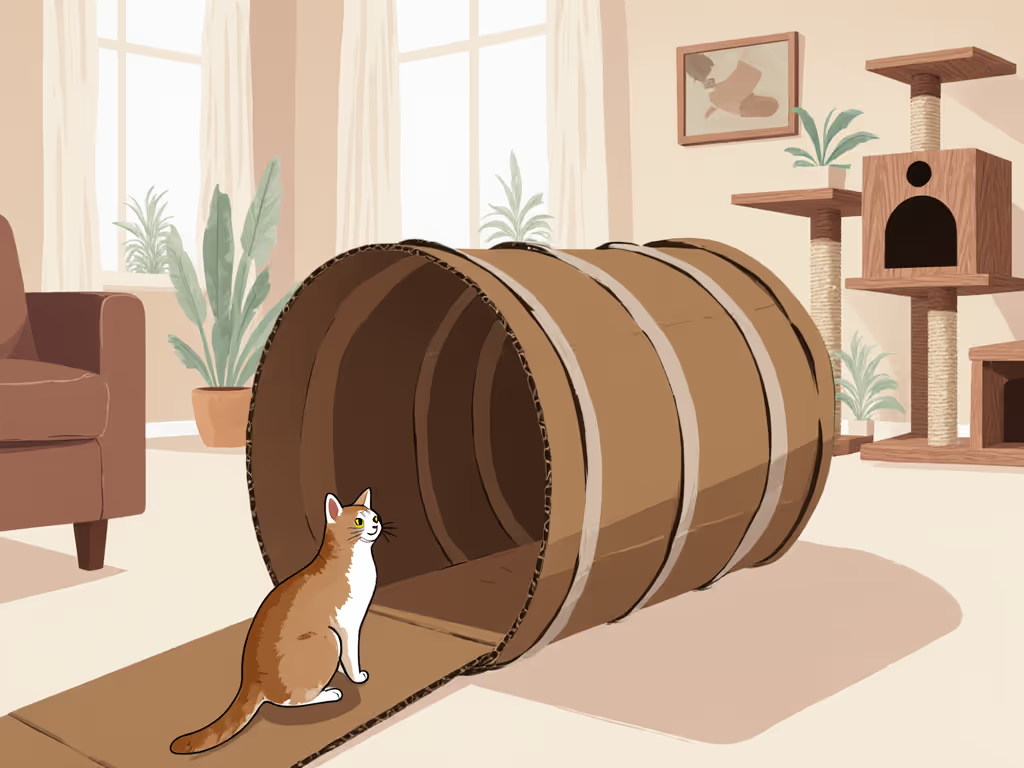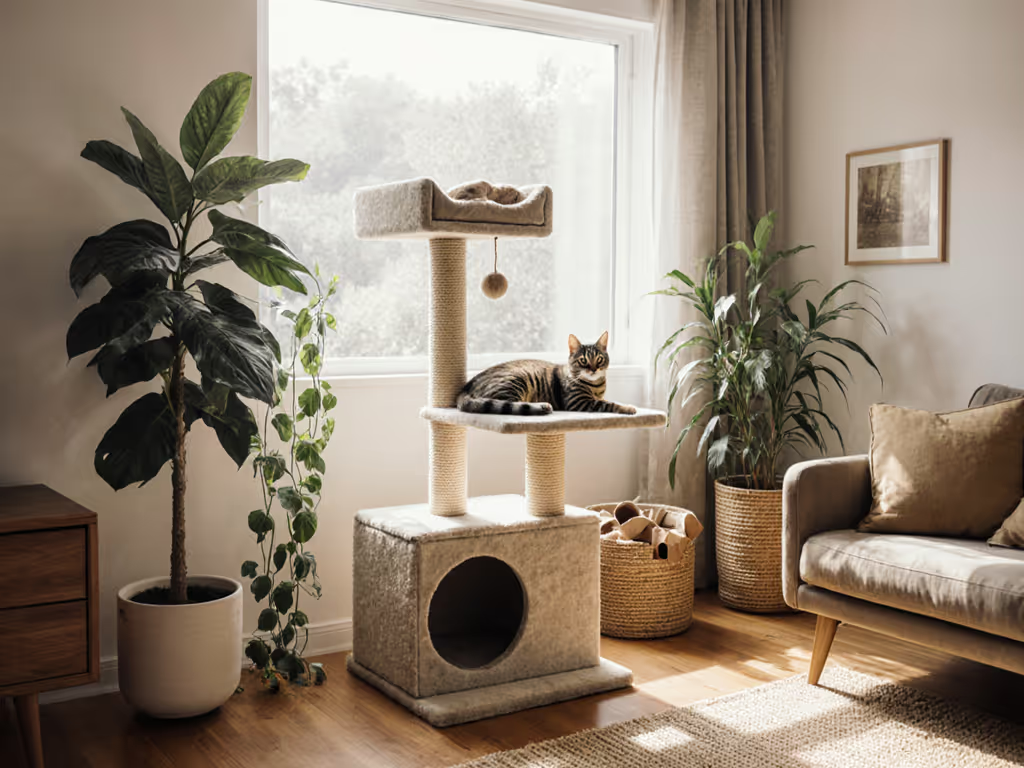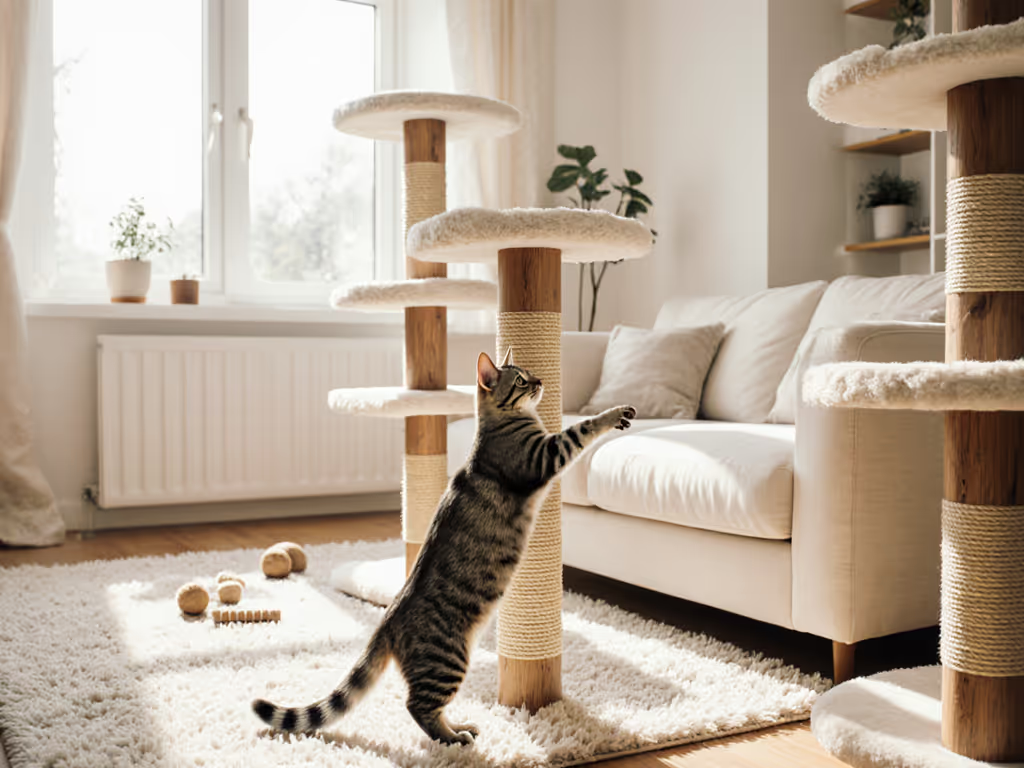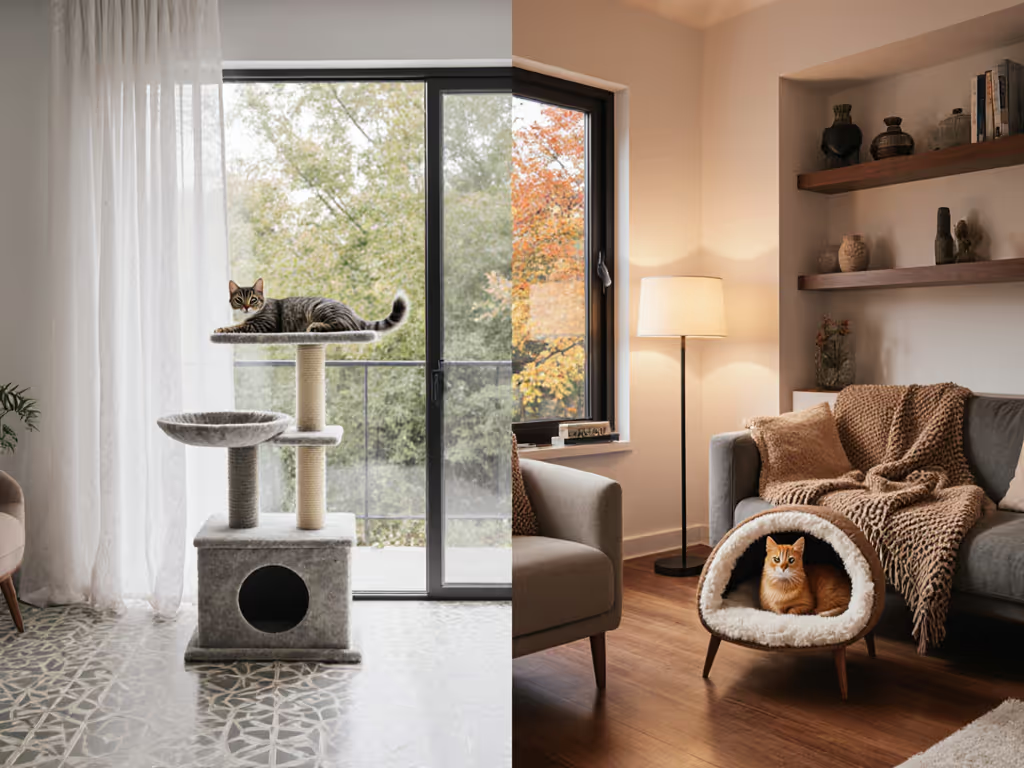Introducing cats to new cat furniture shouldn't feel like a battle of wills (it is about translating their instincts into space that works for them). When cat furniture acclimation aligns with feline psychology, you'll see curious sniffs turn into confident climbs. Too often, we mistake a cat's hesitation for stubbornness when it is actually a plea for predictability. As a behavior specialist who's transformed shelter spaces into cat-friendly havens, I've seen how gentle, sensory-focused transitions turn ignored cat trees into beloved territory. Let's decode why your cat might ignore that $200 scratching post, and how to make it irresistible.
Why Your Cat Ignores New Furniture (It's Not Personal)
New furniture disrupts scent maps and safe pathways. Cats aren't rejecting you; they're protecting their sense of control. Cat behavior with new furniture often reveals stress through avoidance, excessive grooming, or redirected scratching on your sofa. This isn't rebellion. It is biology. Feline stress reduction starts by acknowledging their need for scent continuity and vantage points. A recent industry report confirms 73% of cats show anxiety when environments shift abruptly, especially if vertical escape routes are missing. For a deeper dive into the behavior science behind this, see cat enrichment furniture prevents destructive behavior.
Behavior blossoms when spaces speak your cat's native language.
"My cat won't even touch the new cat tree! Is it defective?"
No, it is scentless. Cats live in a world of invisible communication. That pristine sisal post smells like nothing to them, while your couch holds decades of comforting family scents. Cat furniture scent introduction is non-negotiable. Rub the structure with an old blanket from their bed or a worn sweater (never use scented oils, they overwhelm feline noses). For scratching posts, add your scent too: trace the base with your hand after handling their favorite toy. This turns "foreign object" into "safe zone".
"They only use the base, not the platforms. How do I get them higher?"
Verticality shouldn't feel like a dare. Cats assess height through controlled exploration. If your cat freezes mid-climb, the perch likely lacks visual escape routes or feels unstable. Cat furniture transition tips prioritize security:
- Anchor all towers to walls (unanchored tall builds are exclusion zones, I've seen too many tip-overs)
- Place the first platform below eye level so they can scan the room safely
- Add temporary cardboard ramps if steps are too steep
Remember Miso, the shelter cat who hid for days? Mapping his basecamp with staggered shelves let him climb gradually upward. On day three, he greeted volunteers from a new vantage (no coaxing, just choice).
Your Stepwise Acclimation Plan (No Rushing!)
Phase 1: Pre-Introduction Scent Blending (Days 1-3)
Before assembly, let the furniture sit in a closed room with your cat's bedding for 24 hours. Once placed:
- Rub scent soakers (blankets, worn clothing) on scratching posts and platforms
- Place familiar items on the furniture: their favorite toy, a used litter scoop (yes, really, familiar scent = safety)
- Never force interaction. Leave high-value treats near (not on) the structure to build positive associations
Phase 2: Visual Access & Controlled Exploration (Days 4-7)
Treat the furniture like a neutral territory:
- Position it 6+ feet from food/litter to avoid resource-guarding instincts
- Use a cardboard tunnel (
) as a "scent bridge" between their bed and the new structure
- For multi-cat homes: Feed all cats beside the furniture (not on it initially) during meals (shared ritual = shared safety)
Phase 3: Inviting Play & Ownership (Days 8-14)
Now we shape habits through instinct:
- Dangle a wand toy upward along scratching posts to trigger leap/scratch sequences
- Place catnip sparingly only on scratching surfaces, not beds (avoid overstimulation)
- Reward curiosity with timed treats: Click + treat when they sniff posts, not just step on them
Troubleshooting Common Setbacks
"They're using it, but only for scratching, not climbing!"
This is a win! You've met one instinct. Now build on it:
- Add a scent-safe cardboard scratcher to the second platform to draw them upward
- Tuck a warm heating pad (low setting) under their bed on the top perch (heat = security)
- Meet the need, not the symptom: If they scratch only the base, they're signaling insecurity with height. Add low platforms first.
"My anxious cat lunges at the furniture when I try to move it closer"
You are accidentally triggering territorial defense. Feline stress reduction requires absolute predictability:
- Never rearrange furniture while they're watching
- Move it 1 inch per day toward the target spot during your sleep hours
- After each micro-shift, add fresh scent soakers (a rubbed blanket counts)
- If they hiss, retreat to Phase 1. Punishing creates shame, not safety
The Harmony Payoff: When Furniture Becomes Family
When your cat naps exposed on a new perch, you've achieved the ultimate triumph: trust. This isn't about obedience. It is about crafting spaces where territorial imperatives (scent marking, vantage points, escape routes) align with your home's rhythm. I've watched guardians transform inter-cat tension by adding just one vertical route that gave a shy cat sightlines without confrontation.
Gentle transitions honor what cats already know: Environment isn't just backdrop, it is conversation.
Your goal isn't compliance. It is watching your cat stretch, scratch, and settle into a space that answers their unspoken needs. That is when you'll realize: cat furniture acclimation was never about their adjustment. It was about yours, learning to speak their language of scent, safety, and sovereignty.
